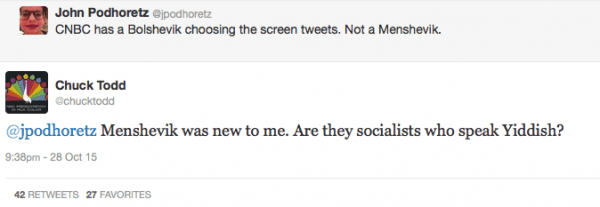CREDENTIALED, BUT NOT EDUCATED: Jill Biden: I Worked Really Hard on My Misspelled, Mathematically-Incorrect, Dissertation. Math is hard: “Three quarters of the class will be Caucasian; one quarter of the class will be African American; and the remaining seats will be filled with students of Asian descent or non-resident aliens.”
Search Results
CREDENTIALED, NOT EDUCATED: The Insufferable Hubris Of The Well-Credentialed.
NOT EDUCATED, BUT HIGHLY CREDENTIALED:
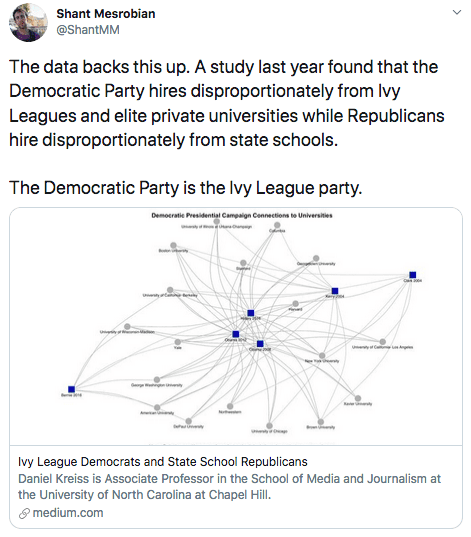
Now consider: Even Republican Supreme Court appointees come exclusively from Harvard and Yale now.
CREDENTIALED BUT NOT EDUCATED: Modern Art Critic Assumes 1939 Painting Is All About Homophobia. It’s About Murderous Union Thugs. “The critic in question is no slouch: Jerry Saltz, a Pulitzer Prize winner. The painting is Paul Cadmus’s Herrin Massacre, from 1939. It depicts an angry mob brutally murdering a group of men in a cemetery field. . . . But as Saltz briefly acknowledges, in a single sentence, the subject of Herrin Massacre is a real historical event: a mob attack that resulted in the deaths of 23 strikebreakers in Herrin, Illinois, in 1922. The Herrin massacre had nothing to do with homophobia; it was a labor dispute that ended with union workers massacring a bunch of people who had been hired to replace them.”
But that’s not an acceptable narrative. Homophobia, on the other hand, is a narrative so acceptable it’s basically mandatory. As we see.
CREDENTIALED, NOT EDUCATED: Parents who don’t vaccinate kids tend to be affluent, better educated, experts say.
Related, via Facebook:
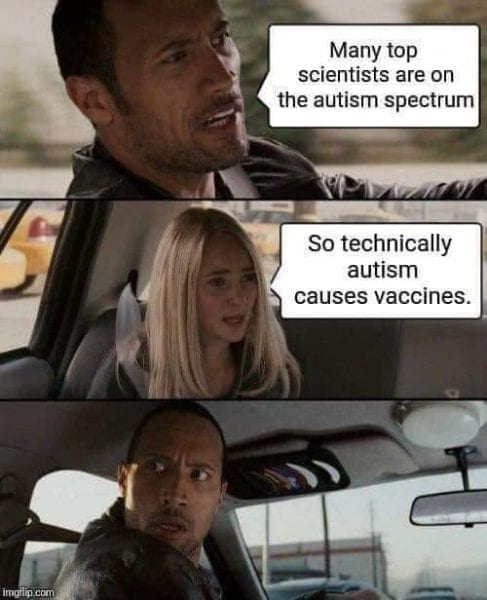
CREDENTIALED, NOT EDUCATED: Our Culture War Is Between People Who Get Results And Empty Suits With Pristine Credentials. “Donald Trump declines the authority of the cultural sectors that most assertively claim it. That’s the real conflict going on.” In America, we disguise class warfare as cultural warfare.
CREDENTIALED, NOT EDUCATED: Why Corporate Recruiters Shouldn’t Be So Obsessed With Prestigious College Degrees.
One reason that businesses struggle to find capable workers is because they have increased their hiring from top-level universities, said Byron Auguste, CEO of the workforce training nonprofit Opportunity@Work. The problem is that these schools haven’t increased the number of students enrolled to match the demand, he explained.
Additionally, an education from a prestigious university doesn’t necessarily correlate to being a good worker, said Garrett Moran, the president of another workforce training nonprofit, Year Up. Companies that automatically ignore prospective job candidates who lack higher education degrees are simply being lazy and are merely screening for keywords on a person’s resume, he explained.
Moran said that there’s “so many young people who just never had a shot” that are getting lost in the existing hiring system. These youth and young adults are just “dying for success, dying for mentorship,” he said.
There’s a huge competitive advantage to be gained by companies willing to hire based on aptitude over pedigree.
CREDENTIALED, NOT EDUCATED: An English Teacher’s Incorrect Correction of a Trump Letter Illustrates His Critics’ Reflexive Condescension.
In fact, none of Mason’s corrections is correct, although there are at least two mistakes in the letter that she neglected to note. Mason’s showy but erroneous pedantry illustrates the tendency of Trump’s opponents to cast policy disagreements as questions of competence and to delight in everything that reflects badly on him, even when that thing is not, strictly speaking, true. These tendencies, which mirror Trump’s own fondness for ad hominem attacks and recklessness with facts, alienate potential allies while confirming his supporters’ conviction that he is sticking it to a supercilious elite that holds them in contempt.
How about that?
CREDENTIALED BUT NOT EDUCATED, SMUG BUT NOT MORAL: The Atlantic: Witnessing the Collapse of the Global Elite. “What has happened here is the same phenomenon that explains so many of the ills of the last couple of decades: the algae-like bloom of elites and their simultaneous loss of substance.”
CREDENTIALED, BUT NOT EDUCATED:
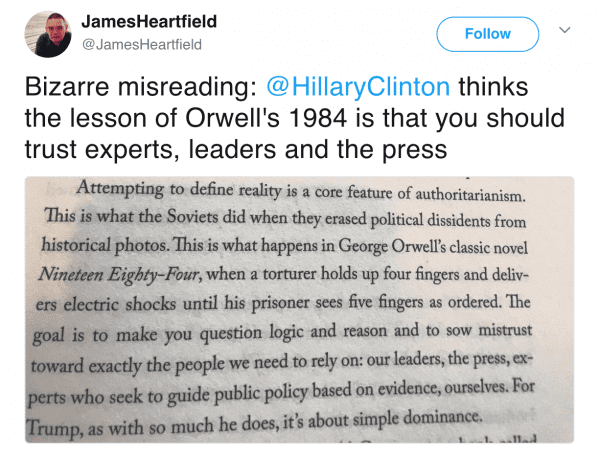
AMONG OUR CREDENTIALED-BUT-NOT-EDUCATED ELITE, SOMETIMES EVEN THE CREDENTIALS ARE PHONY. “The 233-year old American Academy of Arts and Sciences has announced that its longtime President and Chief Executive, Leslie Cohen Berlowitz, has agreed to resign effective at the end of this month following an investigation of charges of resume embellishment and other misconduct. Berlowitz falsely claimed to have received a doctorate from New York University, and has also been criticized for her behavior towards scholars and subordinates, and for her compensation package ($598,000 for 2012) relative to the size of the non-profit organization she led.”
From the comments: “She is clearly a victim of the patriarchy’s obsession with facts and evidence.”
CREDENTIALED, NOT EDUCATED: “Palin knew Revere better than Obama knew Lincoln. . . . Obama inaccurately called Abraham Lincoln the founder of the Republican Party.”
Plus: “It’s even worse, because Palin’s (accurate) comments were made in an on-the-fly interview whereas Obama’s were in a prepared speech.”
UPDATE: From the comments: “History? He can’t even remember that his first stimulus was a spectacular failure.” Heh.
THE ANCHORESS: Uncredentialed Wonders. There’s educated, and there’s credentialed. Sometimes they overlap. Sometimes they don’t.
CREDENTIALED, NOT EDUCATED: Elected Officials Flunk Constitution Quiz.
Elected officials at many levels of government, not just the federal government, swear an oath to “uphold and protect” the U.S. Constitution.
But those elected officials who took the test scored an average 5 percentage points lower than the national average (49 percent vs. 54 percent), with ordinary citizens outscoring these elected officials on each constitutional question.
The country’s in the very best of hands.
CREDENTIALED, NOT EDUCATED: Ezra Klein: the Constitution is Impossible to Understand Because It’s Over 100 Years Old.
Just another dismissal of those long-dormant ideas from dusty bookshelves . . . Because educated credentialed people don’t care about those!
UPDATE: Reader Dave Ivers writes: “And the Left says Palin is stupid?”
ANOTHER UPDATE: Reader Daniel Barenholtz emails: “. . and after all that talk about Bush wanting to ‘shred the constitution’. Now a meme seems to be developing among some liberals that the Constitution is outmoded.”
I guess Bush should have just said “Whaddya mean, it’s over a hundred years old!”
MORE: Reader Mark Meyer notes that although the headline at Eyeblast is “impossible,” Klein actually says the Constitution is “confusing.” I don’t see this as being as big a difference as Meyer does, but I suppose it’s worth noting.
CREDENTIALED, not educated.
CREDENTIALED, NOT EDUCATED: Kathleen Parker needs a refresher course in American history.
OUR CREDENTIALED-NOT-EDUCATED GENTRY CLASS: New York, Arkansas…You Know, the Midwest.
“CREDENTIALED, NOT EDUCATED:” Other people are noticing, too.
CREDENTIALED, NOT EDUCATED: More on the left’s Tea Party ignorance. The Boston Tea Party, that is.
NOT EDUCATED, JUST CREDENTIALED (CONT’D): Chris Coons can’t name the five freedoms in the First Amendment. I wonder if he knows what happened in 1773?
HIGHER EDUCATION BUBBLE UPDATE: Pity the poor avocado-eating graduates: University-educated millennials have absorbed elite values but will never enjoy the lifestyle.
Countless articles have rehearsed the class insecurities of the “left behind” Brexiters. Generally these unfortunates are depicted fulminating over pasties and ale in shabby market towns and grim post-industrial cities outside the London area. The object of their antipathy is the shiny “elite”, plugged into a promise-filled, multicultural urban life and the knowledge economy, seemingly buoyant in the new, frictionless modern world.
Leaving aside its substantive, real-world pros and cons, Europhilia has become a mark of devotion to the culture and worldview associated with this “elite” and the modern world it navigates. It is a value set strongly correlated with tertiary education and that has come to be called “openness”. . . .
Meanwhile, the boom in openness-promoting tertiary education produced not so much a boom in graduate jobs as inflation in the qualification levels required to do the jobs we already had. This has left many young people struggling to service a mountain of debt on salaries that are never likely to show much of the “graduate premium” they were promised.
Today, thanks in part to the “open” economy whose values form the foundation of the “cultural Remain” identity, the cost of living — and especially home ownership — has rocketed. Simple aspirations that were within the reach of the working class in the 20th century are an unattainable dream today for millions of young people far higher up the sociocultural pile. And yet those young graduates have all, in the course of moving away to get their degree, absorbed the “open” value set now explicitly taught in tertiary education.
The result is an Everywhere precariat, that has absorbed the values of a world that has little to offer it in terms of concrete benefits, and resolves this conflict by renting the heavily-subsidised and internet-enabled perks of a smarter lifestyle than it can afford to buy. Where once rentals might have just been housing and cars, today that can even include clothing.
Related: Kenneth Anderson: The Fragmenting of the New Class Elites, or, Downward Mobility.
n social theory, OWS is best understood not as a populist movement against the bankers, but instead as the breakdown of the New Class into its two increasingly disconnected parts. The upper tier, the bankers-government bankers-super credentialed elites. But also the lower tier, those who saw themselves entitled to a white collar job in the Virtue Industries of government and non-profits – the helping professions, the culture industry, the virtueocracies, the industries of therapeutic social control, as Christopher Lasch pointed out in his final book, The Revolt of the Elites.
The two tiers of the New Class have always had different sources of rents, however. For the upper tier, since 1990, it has come through its ability to take the benefits of generations of US social investment in education and sell that expertise across global markets – leveraging expertise and access to capital and technological markets in the 1990s to places in Asia and the former communist world in desperate need of it. As Lasch said, the revolt and flight of the elites, to marketize themselves globally as free agents – to take the social capital derived over many generations by American society, and to go live in the jet stream and extract returns on a global scale for that expertise. But that expertise is now largely commodified – to paraphrase David Swenson on financial engineering, that kind of universal expertise is commodified, cheaply available, and no longer commands much premium. As those returns have come under pressure, the Global New Class has come home, looking to command premiums through privileged access to the public-private divide – access most visible at the moment as virtuous new technology projects that turn out to be mere crony capitalism.
The lower tier is in a different situation and always has been. It is characterized by status-income disequilibrium, to borrow from David Brooks; it cultivates the sensibilities of the upper tier New Class, but does not have the ability to globalize its rent extraction. The helping professions, the professions of therapeutic authoritarianism (the social workers as well as the public safety workers), the virtuecrats, the regulatory class, etc., have a problem – they mostly service and manage individuals, the client-consumers of the welfare state. Their rents are not leveraged very much, certainly not globally, and are limited to what amounts to an hourly wage. The method of ramping up wages, however, is through public employee unions and their own special ability to access the public-private divide. But, as everyone understands, that model no longer works, because it has overreached and overleveraged, to the point that even the system’s most sympathetic politicians understand that it cannot pay up.
The upper tier is still doing pretty well. But the lower tier of the New Class – the machine by which universities trained young people to become minor regulators and then delivered them into white collar positions on the basis of credentials in history, political science, literature, ethnic and women’s studies – with or without the benefit of law school – has broken down. The supply is uninterrupted, but the demand has dried up. The agony of the students getting dumped at the far end of the supply chain is in large part the OWS. As Above the Law points out, here is “John,” who got out of undergrad, spent a year unemployed and living at home, and is now apparently at University of Vermont law school, with its top ranked environmental law program – John wants to work at a “nonprofit.”
Read the whole thing(s).
DISPATCHES FROM NERD PROM. The top of the Drudge Report is astounding today:
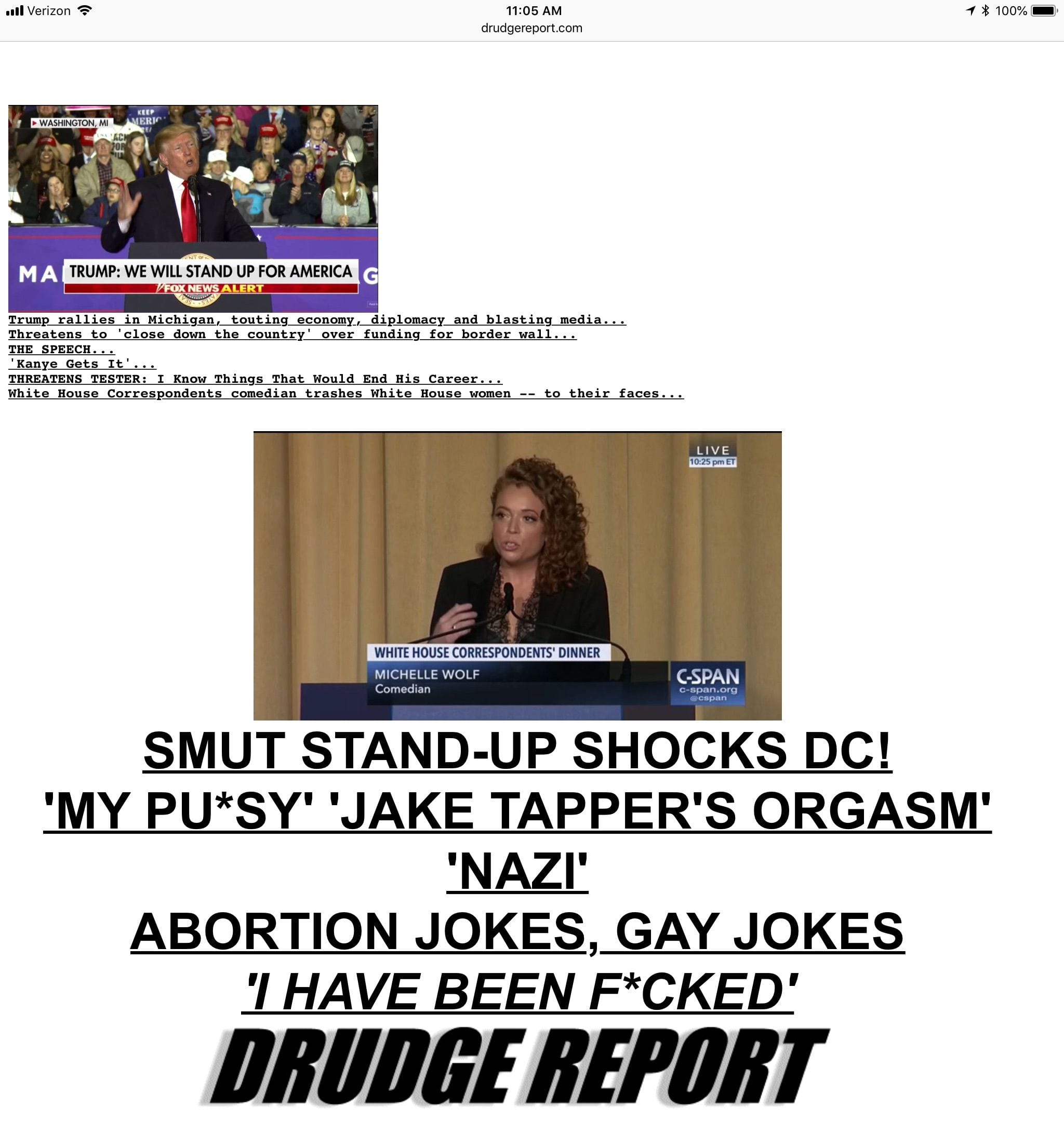
Credentialed-but-not-educated – and the worst political class in American history, as Glenn likes to say, who have no idea how easily they’re being trolled by the administration over their past fake news and anti-GOP hyperbole.
UPDATE: “After [last night’s] WHCD debacle, the GOP message until November should be ‘They Hate You,’ featuring nothing but clips of Hillary/Schumer/Pelosi/Colleges/Media mocking and attacking heartland voters. ‘They hate you and want to control you. Don’t let them win,’” Sean Davis of the Federalist tweets.
HIGHER EDUCATION BUBBLE UPDATE: How a half-educated tech elite delivered us into chaos. They’re all into “social justice” though.
Related: The Arrogant Ignorance of the ‘Well-Educated.’ All too often, they’re more credentialed than educated.

